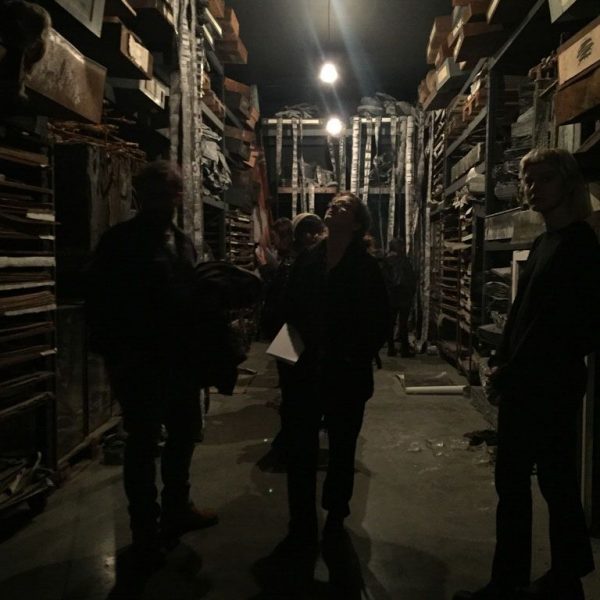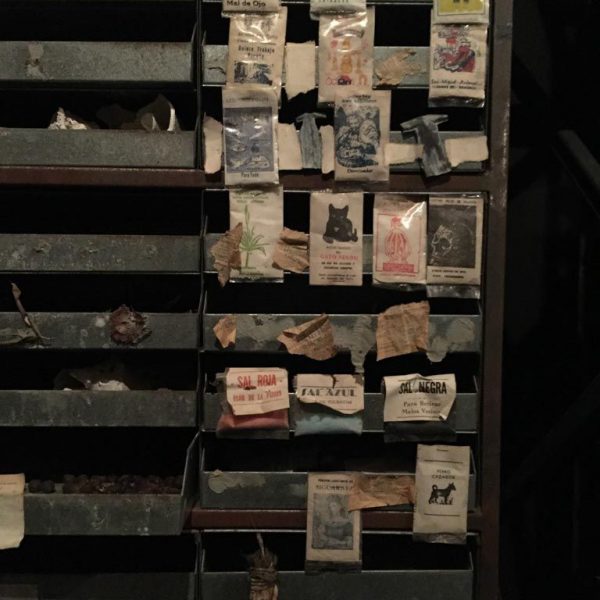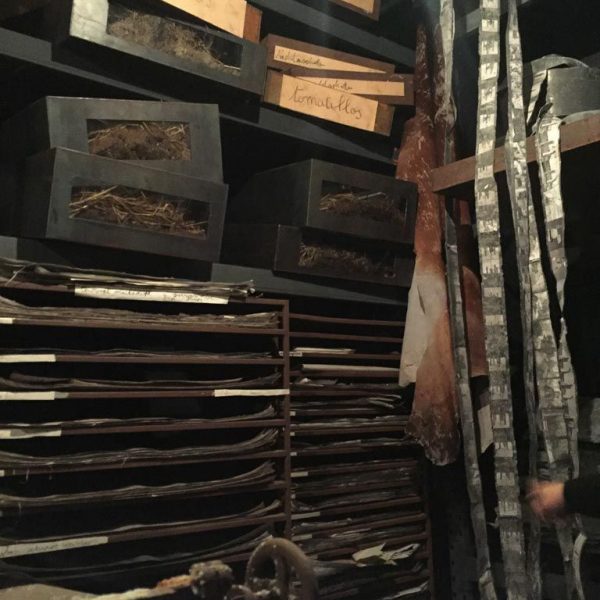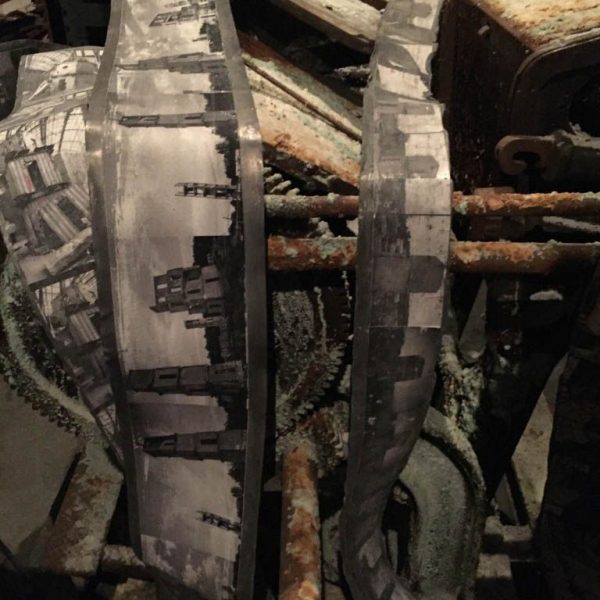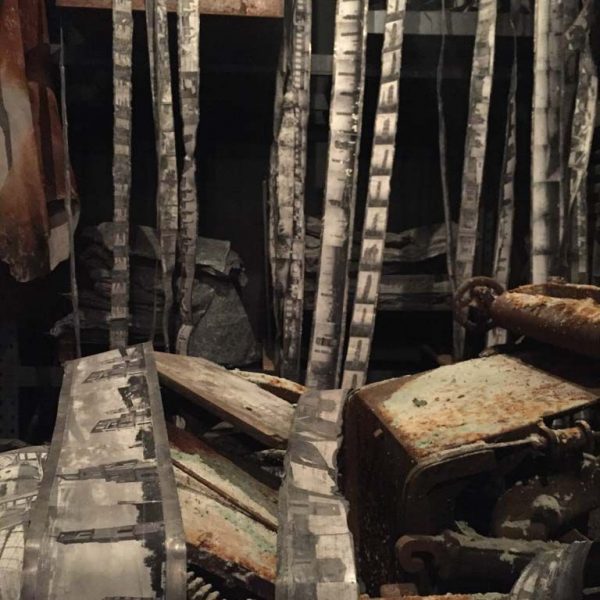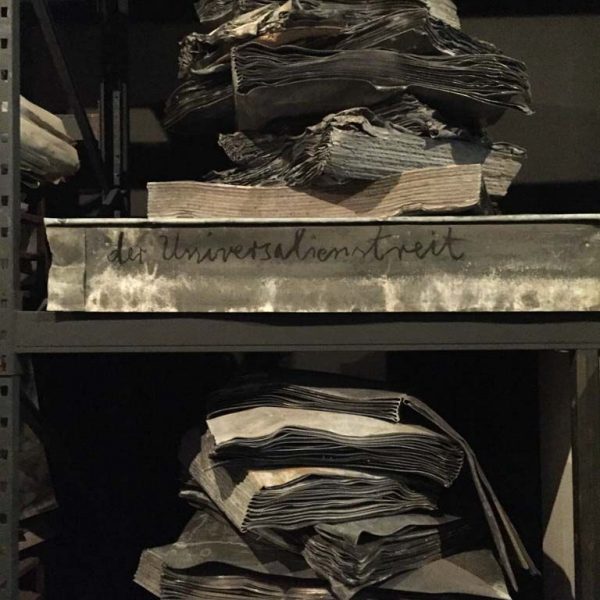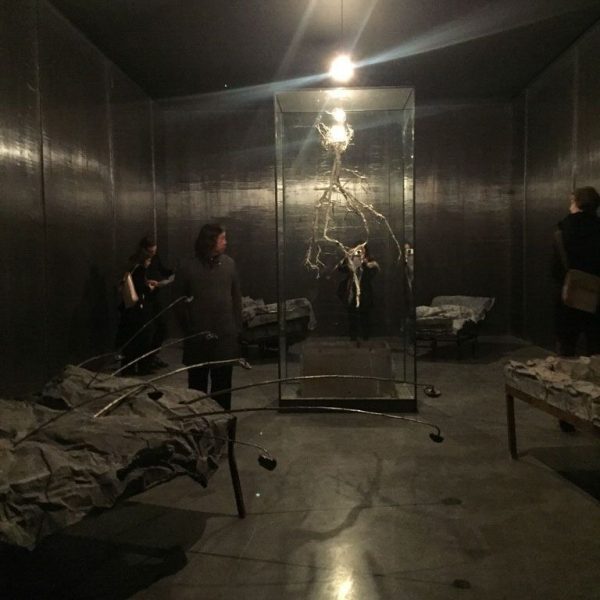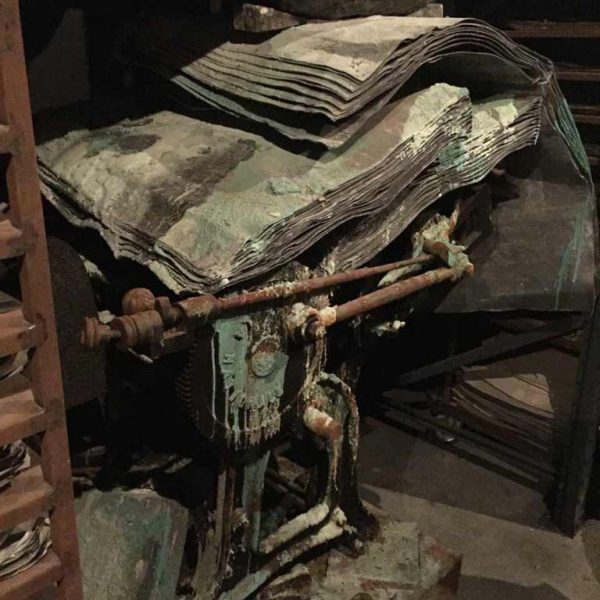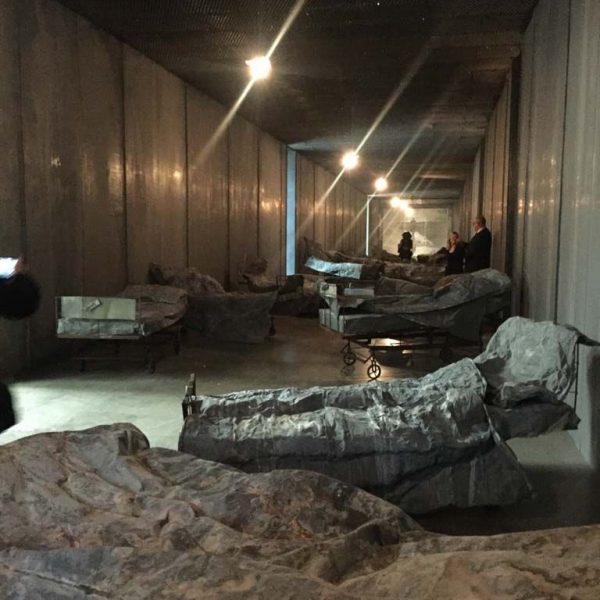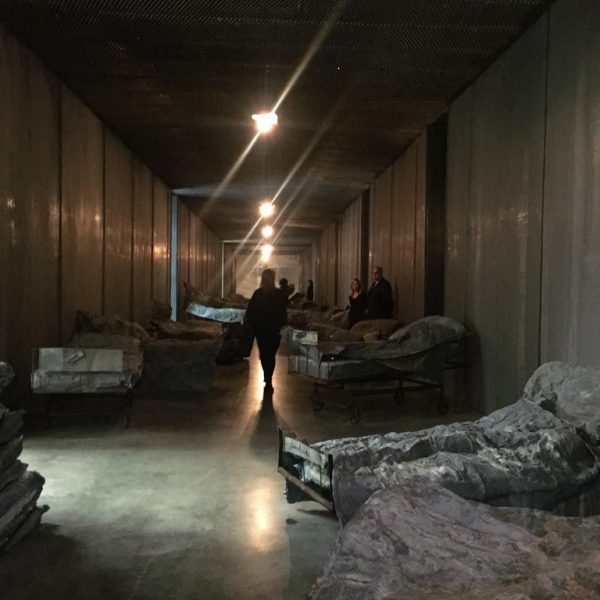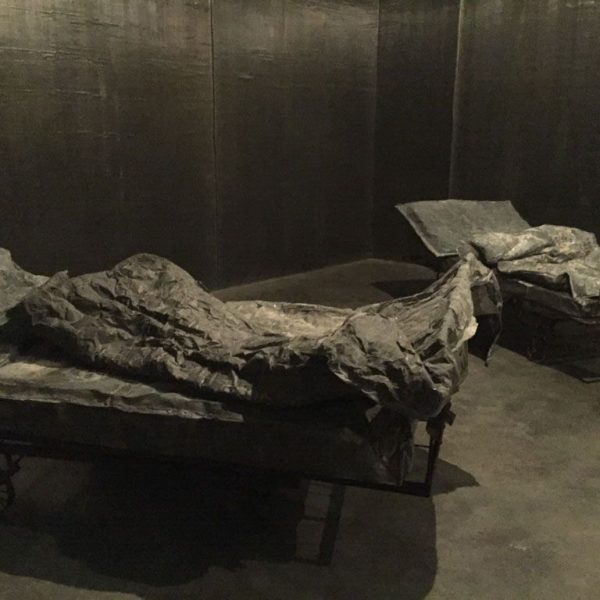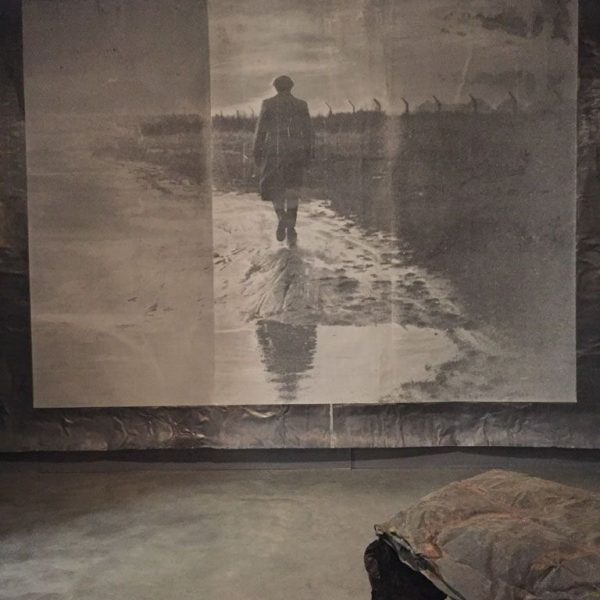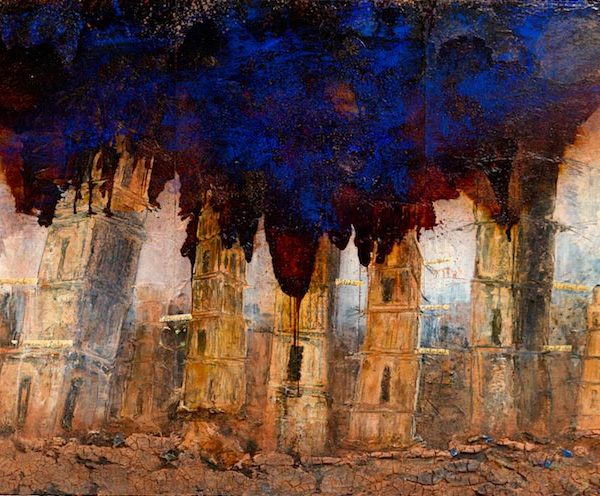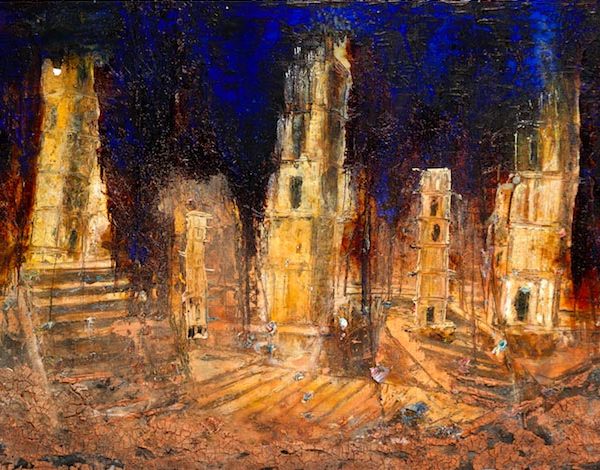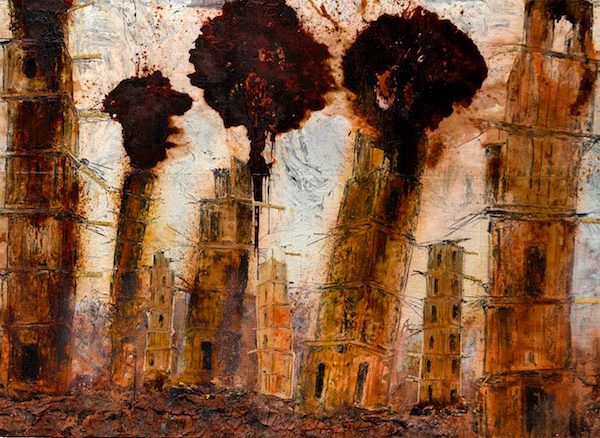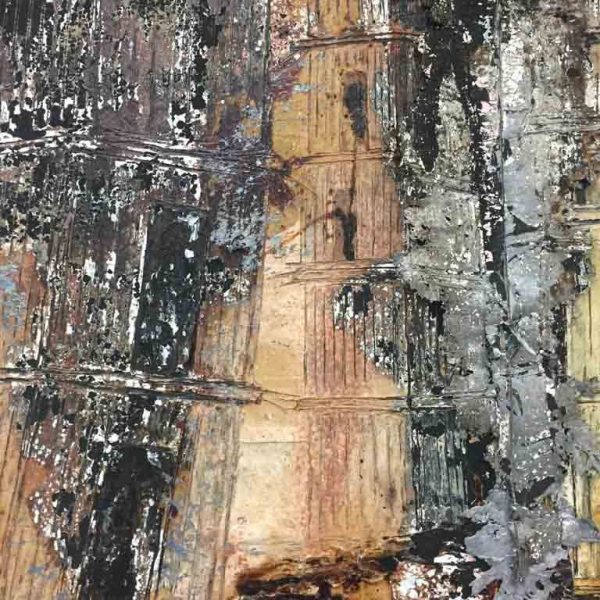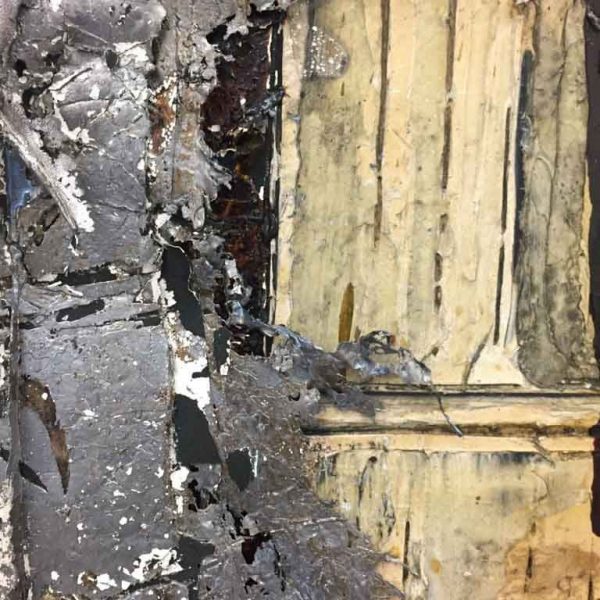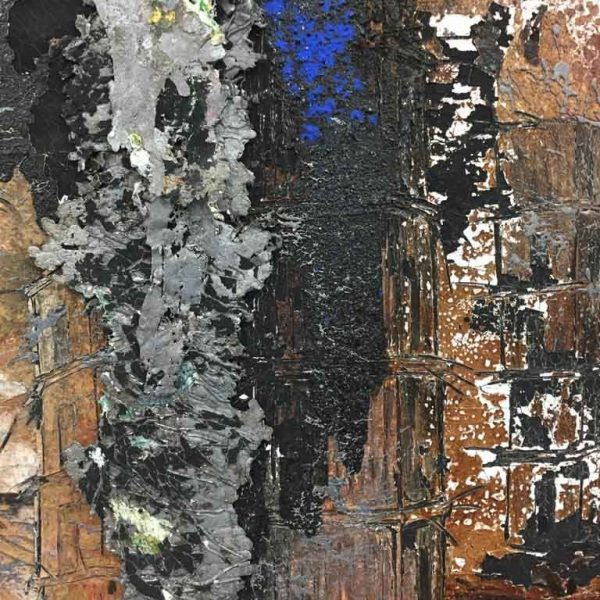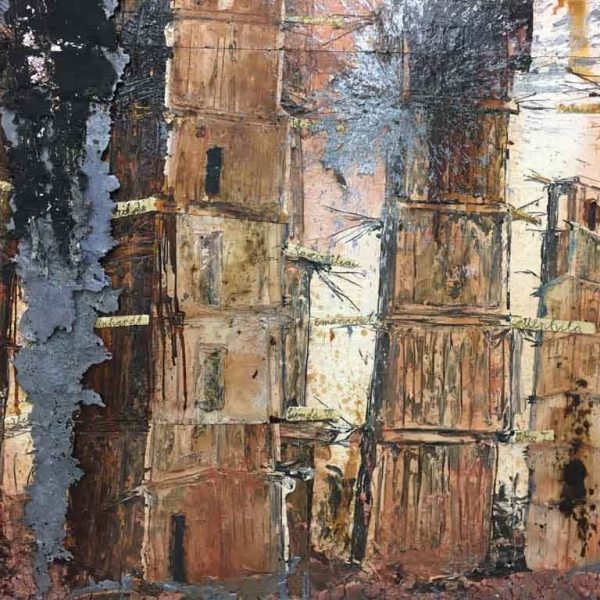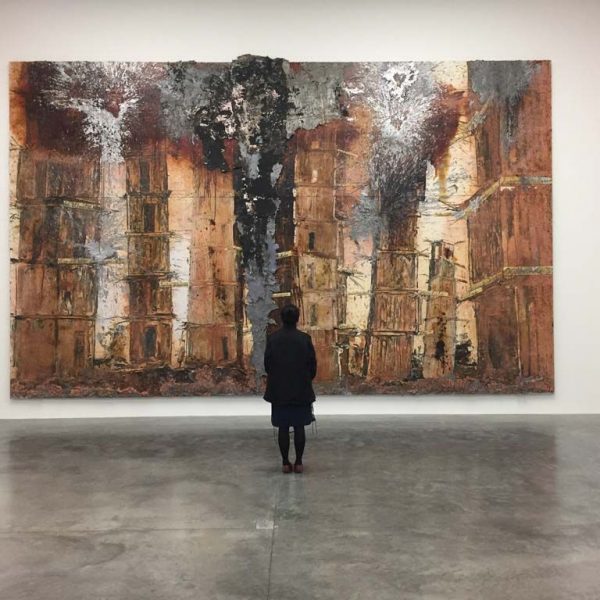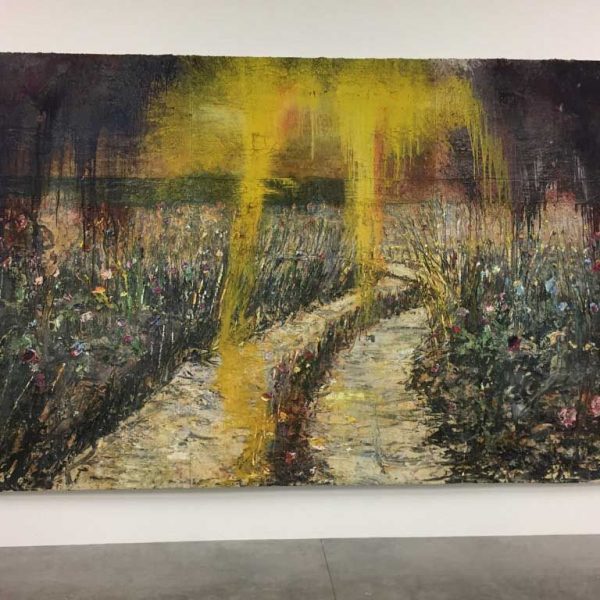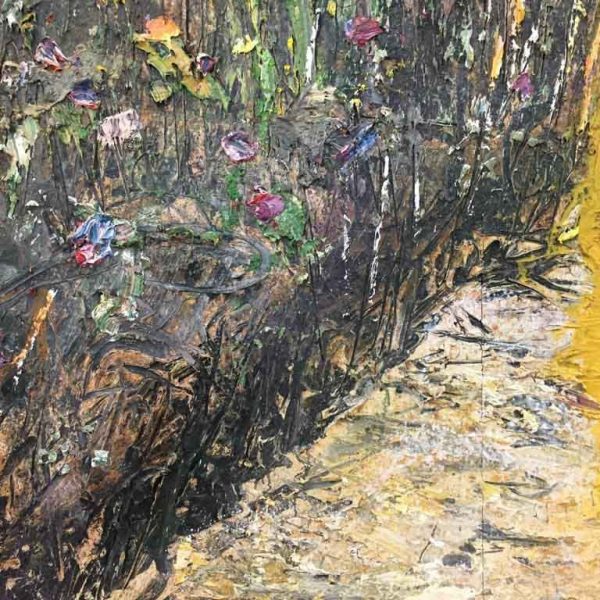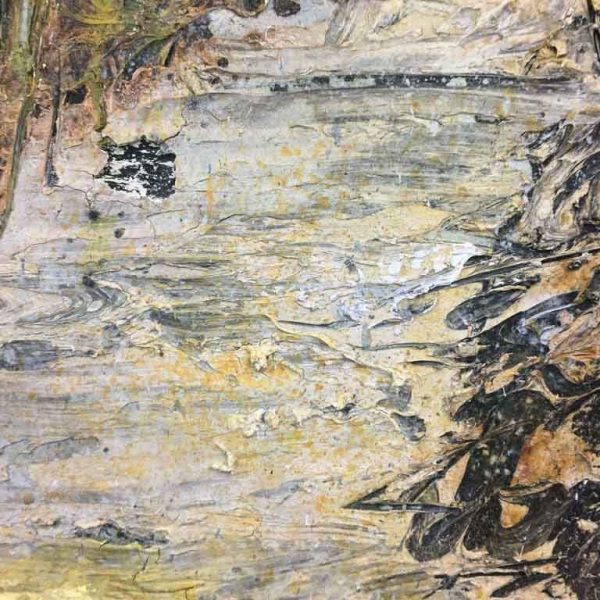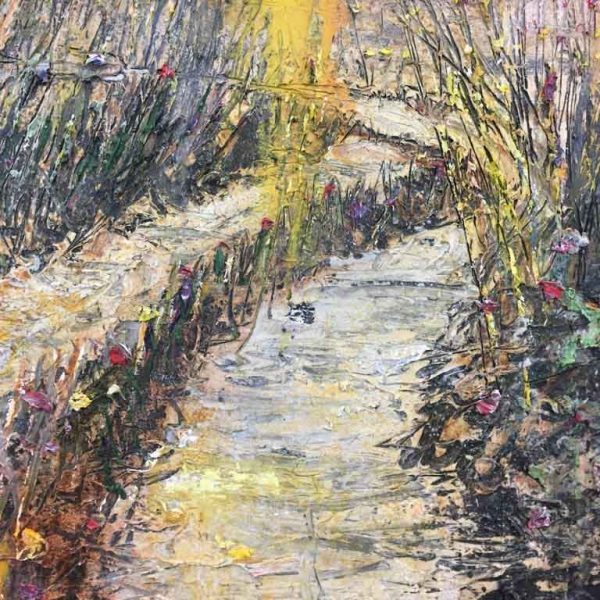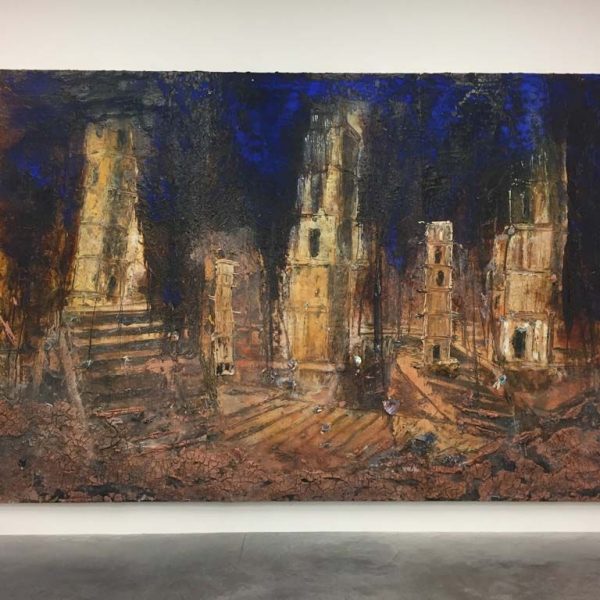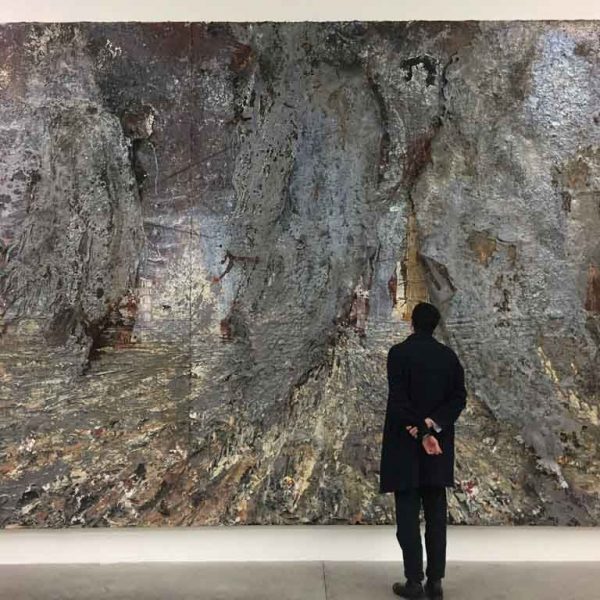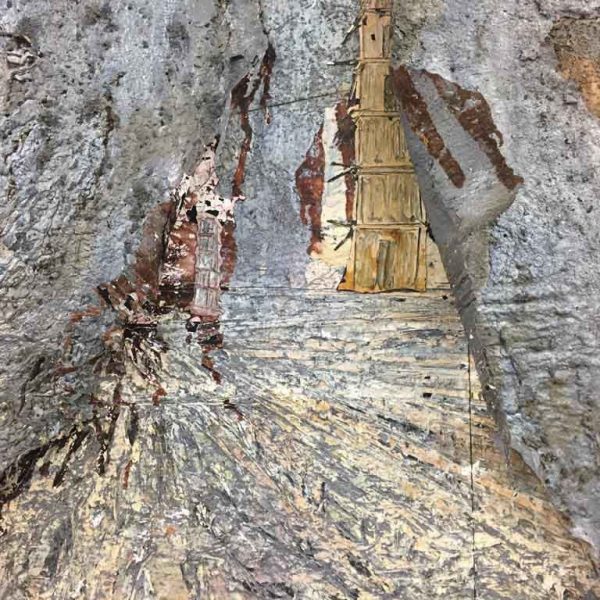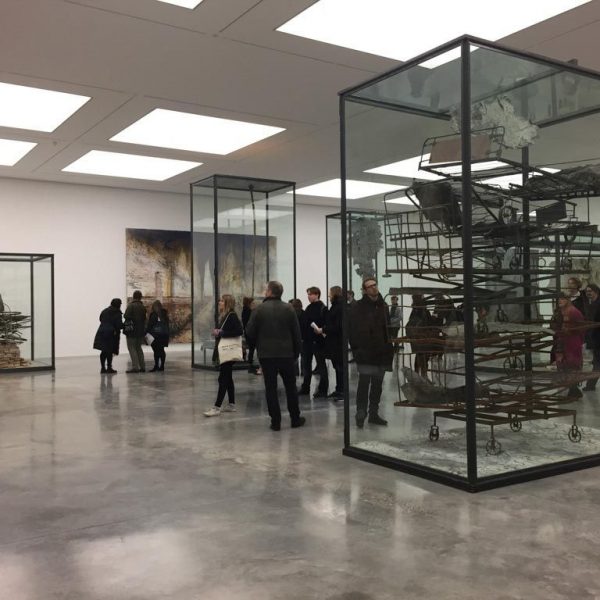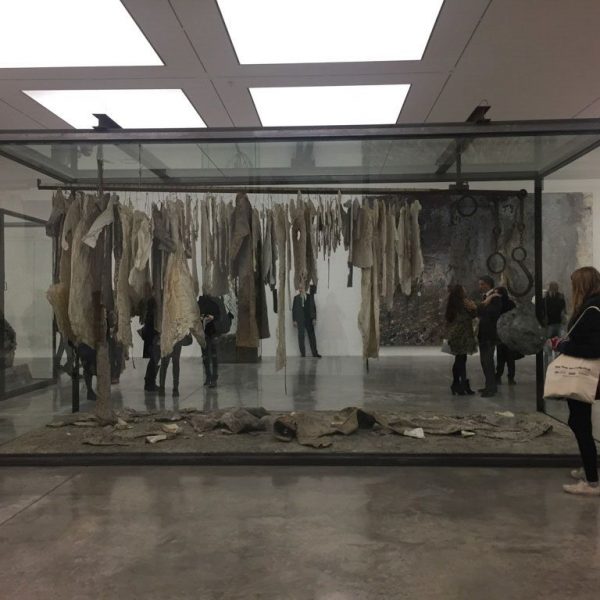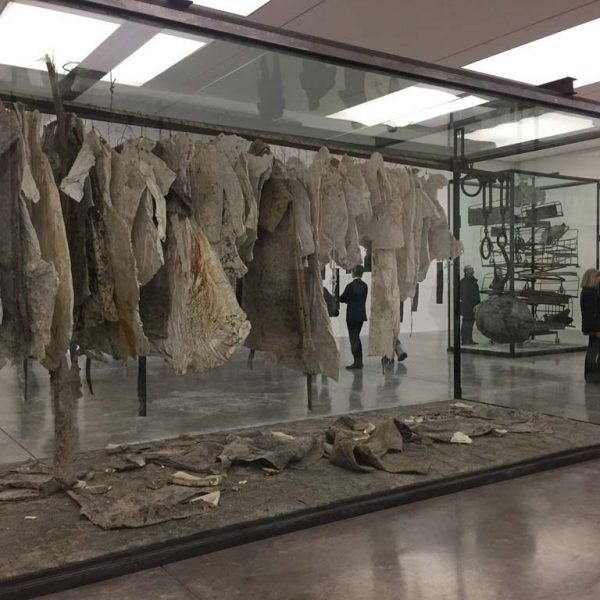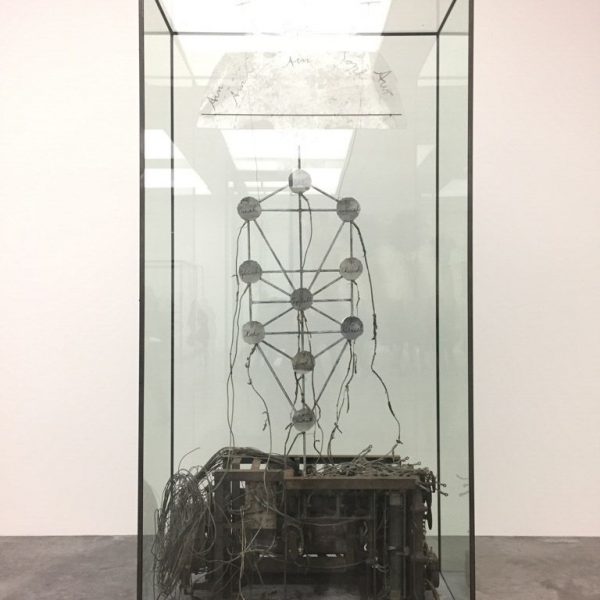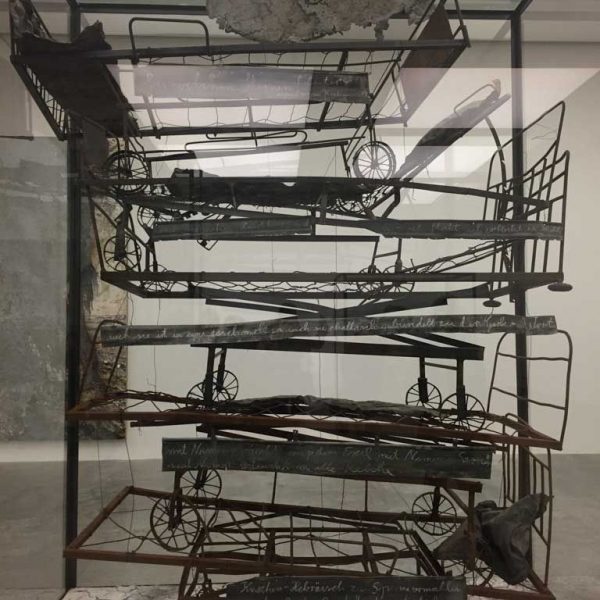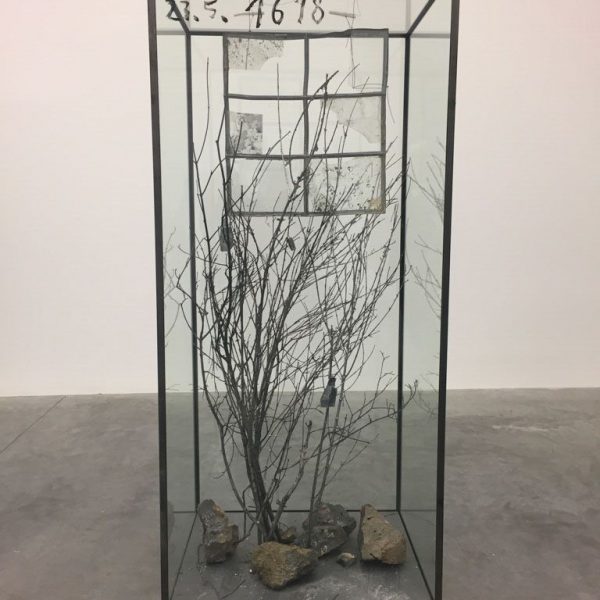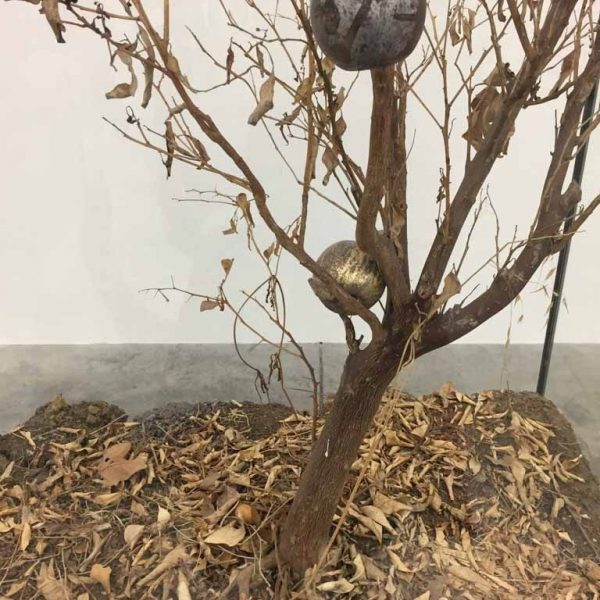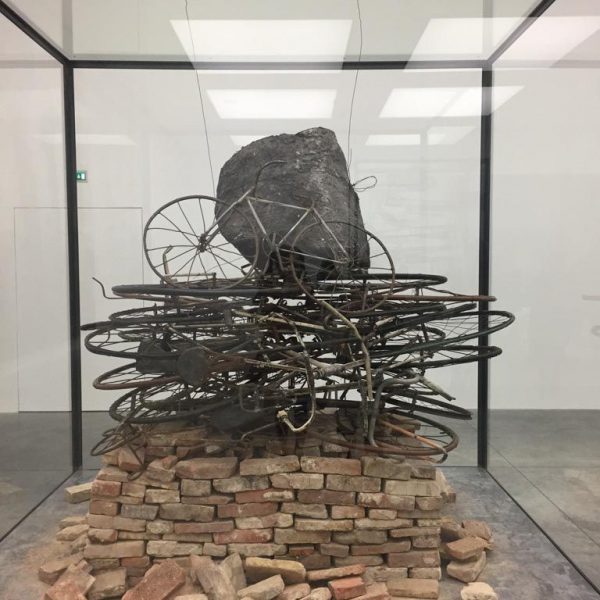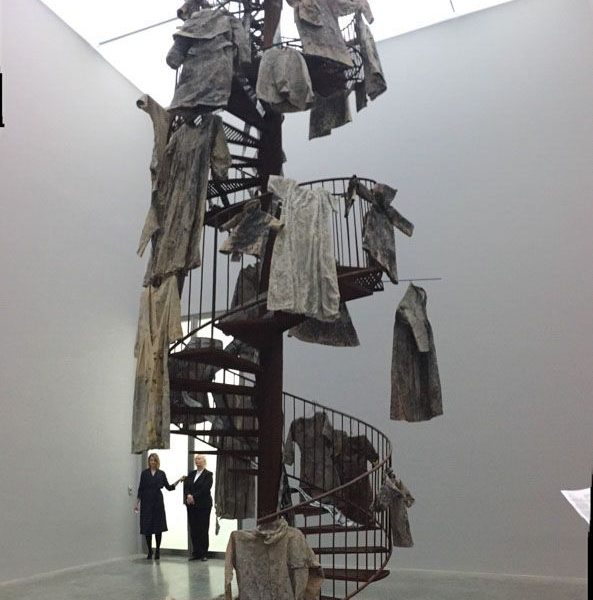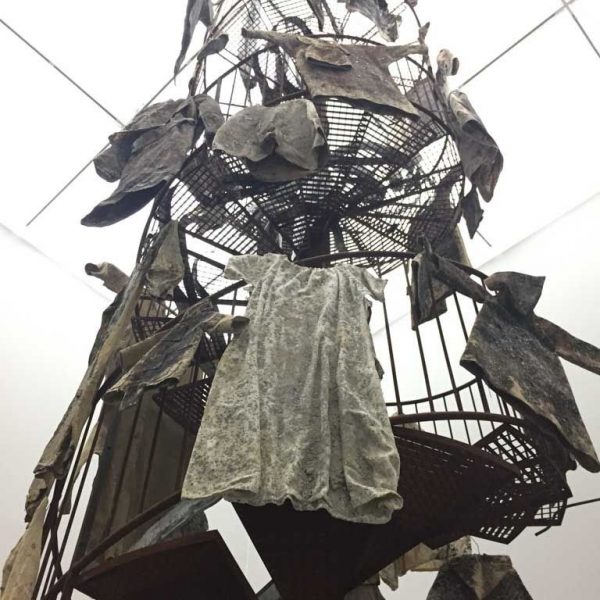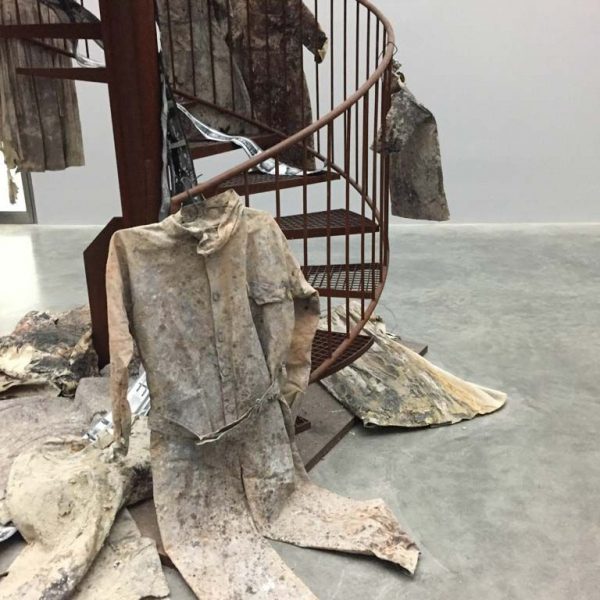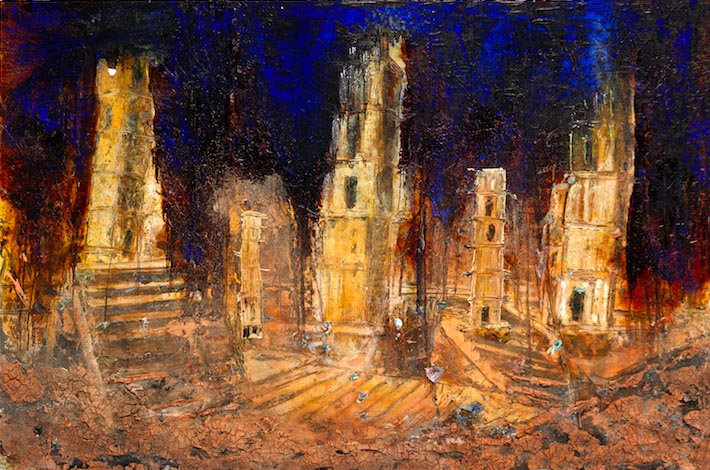
Anselm Kiefer|Walhalla 安塞姆·基弗|英靈神殿
23 November 2016 – 12 February 2017
White Cube, Bermondsey, London. SE1 3TQ
White Cube London Bermondsey presents an exhibition by Anselm Kiefer featuring new, large-scale installation, sculpture and painting. Titled ‘Walhalla’, the exhibition refers to the mythical place in Norse mythology, a paradise for those slain in battle, as well as to the Walhalla neo-classical monument, built by Ludwig I King of Bavaria in 1842 to honour heroic figures in German history.
Throughout his career, Kiefer has interwoven themes of history, politics and landscape into his work, revisiting imagery and symbolism through different forms and media. His work conflates and connects themes, resonating with the idea of history as one continuous cycle. In the past, for example, Kiefer has employed the symbolism of Norse mythology alongside the forms of National Socialist architecture, and for this exhibition he uses this as a basis for dramatic new paintings and sculpture that deal simultaneously with notions of creation and destruction, life and death.
倫敦白立方畫廊(White Cube)於2016年11月23日至2017年2月12日展出安塞姆·基弗個展《瓦爾哈拉|英靈神殿(Walhalla)》 。展覽囊括了基弗最新的創作,其中包括大型裝置、雕塑與繪畫。瓦爾哈拉是北歐神話裡的天堂,也譯作英靈神殿,為戰而犧牲的勇士將進入的天堂;瓦爾哈拉同時也指向為了紀念德國歷史上的英雄人物而建造的瓦爾哈拉神殿,該神殿由巴伐利亞國王路德維希一世在1842年興建,有著濃郁的“新表現主義”風格。
在基弗的整個藝術生涯中,他的作品把歷史、政治、景觀交織在一起,通過不同的形式與媒介重新審視圖像與象徵主義;他的作品主題經常互相融合互相聯繫,就如歷史一樣不斷循環往復。在以往的作品中,基弗挪用了北歐神話的各種象徵以及國家社會主義/納粹主義的建築形式,而在這次展覽當中,他亦將此基礎上創作新的繪畫及雕塑作品,同時表現“創造與毀滅”,“生與死”這樣的概念。
The exhibition focuses on the major new installation Walhalla in the central corridor space, from which the other works thematically depart. Featuring a long, narrow room lined with oxidised lead, rows of fold-up steel beds are set close together and draped with dark grey crumpled lead sheets and covers. At the far end of the room, a black and white photograph mounted on lead depicts a lone figure walking away into a bleak, wintery landscape. The whole is dark, sombre and sparsely lit by a series of bare light bulbs, suggesting an institutional dormitory, military sleeping quarters or battlefield hospital. This sense of morbid claustrophobia is countered nonetheless by the offer of rest, of a break in the journey; a place perhaps of transformation.
此次展覽著重呈現了大型裝置作品《瓦爾哈拉(Walhalla)》,該作品被置於畫廊的中央走廊,其他作品則按主題分佈於走廊兩旁的空間。走進走廊猶如進入一個狹長的房間,一張張生鏽的折疊床在空間兩邊依次排開,上面鋪著深灰色的、皺巴巴的鉛制床單及被子。在房間(亦即走廊)的盡頭,一張黑白照片鑲在鉛板上,圖中一個孤獨的身影走在黯淡陰冷的田野裡。整個場景憂鬱肅穆,僅由幾個零落的燈泡點亮著空間,這裡彷彿是收容所、軍事宿舍、又或是戰地醫院。空間一方面彌漫著幽閉恐懼症的病態氣息,另一方面卻又彷彿向觀者提出中途休憩、停止的建議;這裡或許是一個可以發生某些轉變的地方。
In his new paintings, Kiefer employs a range of media – oil, acrylic, emulsion, shellac and clay – to emphasise the space of painting as a threshold into a mythic, imaginative realm. Here, a series of high towers are set amid desolate landscapes, their stacked forms exploding and dissolving into clouds of deep black or caustic blue smoke. A familiar motif in the artist’s work, the towers are based on his own sculptures made from rough concrete casts of shipping containers, including the brutalist-style towers of Jericho made for the set of In the Beginning staged at Opéra Bastille in Paris in 2009. In one such painting, Kiefer depicts the towers up-close, as if the viewer has found themselves in the ruins of some ancient city. In another work, which consists of three panels, flights of steps leading up to each tower reference the neo-classical, imposing architecture of Walhalla. Here, however, rather than the symbolic bastion of power that Walhalla aims to evoke, they are flat and two-dimensional, overlaid and set at impossible angles under the expanse of a meridian blue sky. In other pictures, which echo the landscapes of Van Gogh, the paintings are divided by a rough track, receding as far as the eye can see and often encrusted with layers of paint and deposited with a bitumen-like matter.
基弗最新的繪畫作品裡使用了一系列的媒介(如油畫、丙烯、乳膠、蟲膠、黏土)來突出繪畫的空間感,借此進入一個有如神話般的異想世界。在這裡,一座座高塔佇立在荒涼的田野之中,高塔堆砌的圖案在深黑的或燒鹼藍的煙霧中炸裂、消融。在基弗過往的作品裡,高塔是一個常見的主題,這些高塔來自於他自己的雕塑作品,通過粗糙的混凝土澆築在貨船集裝箱上倒模而成。基弗在2009年為巴黎巴士底歌劇院(Opéra Bastille)的歌劇《In the Beginning》製作過此類野獸派風格的耶利哥高塔(towers of Jericho)。在一幅繪有高塔的畫裡,基弗將塔樓描繪得近在咫尺,讓觀眾彷彿置身於古城的廢墟中。而在另一件繪畫作品裡,三座高塔遙相呼應,而塔下的階梯把人引至高塔,彷彿指向壯麗的新古典主義建築代表瓦爾哈拉神殿。然而畫面中那些平面的、二維的瓦爾哈拉高塔以一種不合理的角度立於藍天之下,並沒有讓人聯想為象徵權利的堡壘。此次展出的其他繪畫作品讓人不禁想到梵·高,畫面中粗糙的路徑漸行漸遠,被層層疊疊的油彩包裹,瀝青一樣的物質沉積其上。
Several new vitrines, in different scales, continue these themes, through assemblages of soiled bleached clothes, stones, stacks of institutional metal beds, bicycles or small trees set upon squared off, cut-out sections of earth. Sealed off and displayed, these objects appear like fossils or unearthed artefacts entombed in glass and lead cases.
此外,大小不一的玻璃櫥櫃裡展現的雕塑延續了這些主題,通過組合褪色的衣物,石頭,層層疊疊的金屬床,單車,又或者從土裡分割出來的小樹,這些材料被封存在玻璃櫃裡進行展示,就像化石一樣,又或者是出土文物,被埋葬在玻璃鉛櫃裡。
In the ‘9 x 9 x 9’ gallery, a dramatic, rusted metal spiral staircase disappears into the ceiling. Along its handrails hang curling strips of film reel, mounted onto lead, and soiled, robe-like dresses on wire coat hangers. In Norse mythology, Valhalla is linked to the Valkyries; women who decided who would live and who would die in battle. After making this choice, the Valkyries accompanied the dead to Valhalla, the hall of the slain in the afterlife ruled over by the god Odin. Entitled Steigend steigend sinke nieder (2016), this sculpture relates to the moment when the Valkyries arrive at Valhalla, their robes periodically discarded along the climb, suggesting loss and the trace of bodies that are no longer there.
在畫廊的“9x9x9”空間裡,一座生鏽的螺旋樓梯一直延伸到天花板,格外引人注目。沿著它的扶手懸掛著許多繃在鉛板上的膠片和臟兮兮的長袍式衣裙。在北歐神話裡,瓦爾哈拉/英靈神殿(Valhalla)與女武神瓦爾基麗(Valkyries)密不可分,女武神們決定著戰爭裡的戰士誰生誰死。在她們做好決定之後,女武神便陪伴著這些這些死者走入瓦爾哈拉,也就是由神明奧丁(Odin)掌管的英靈神殿。雕塑《Entitled Steigend steigend sinke nieder(2016)》,描繪的就是女武神到達英靈神殿的那一刻,她們的長袍沿著旋轉樓梯依次懸掛,暗指生命消逝,軀體亦逐漸消亡。
注:Valhalla是瓦爾哈拉挪威語的拼寫方法,Walhalla是德語中的拼寫
ART.ZIP福利
Anselm Kieferf in conversation with Tim Marlow
錯過了現場不要緊,聽聽錄音回放吧~

